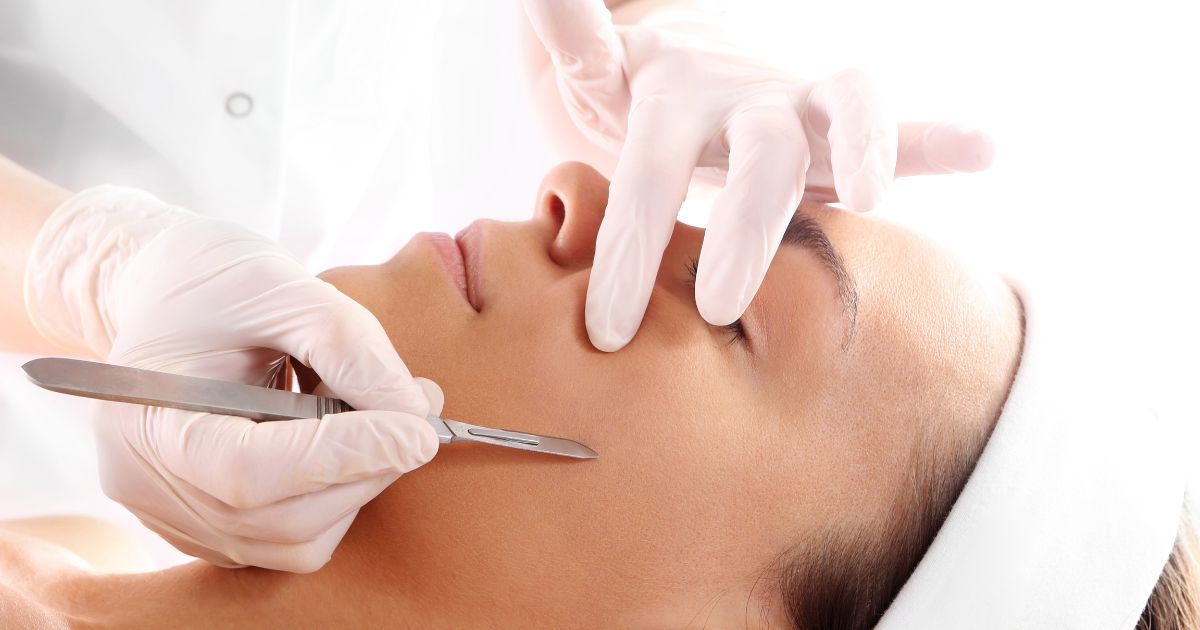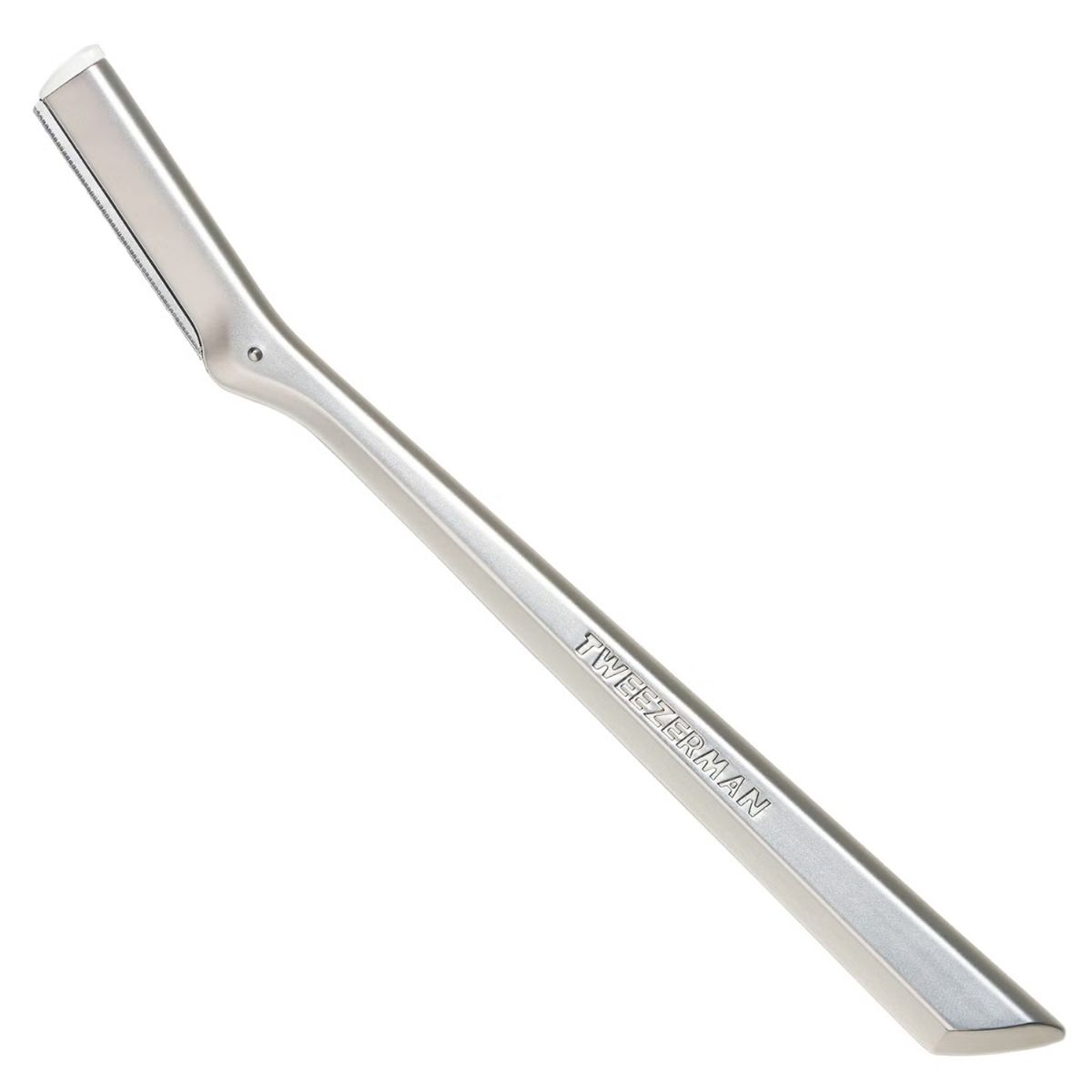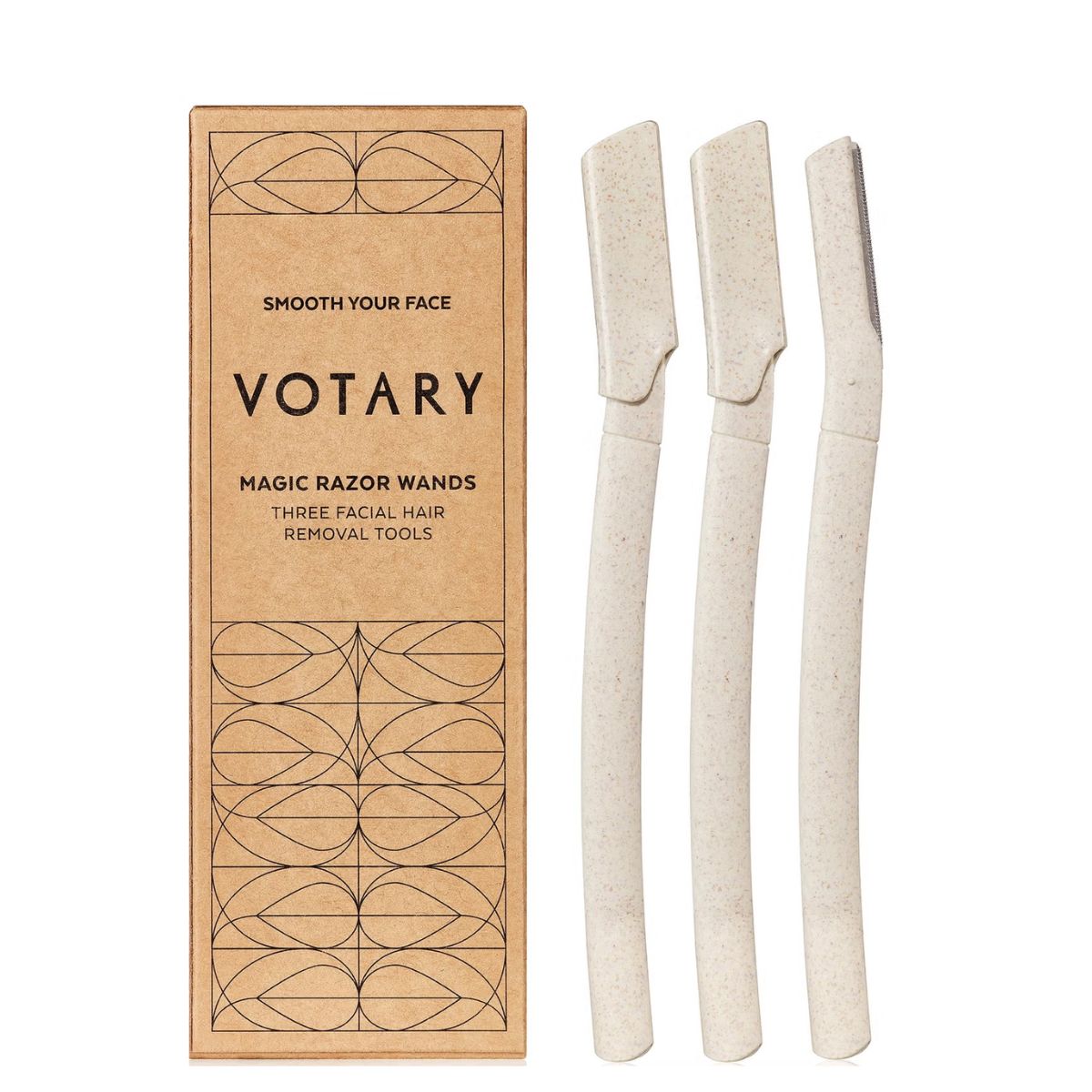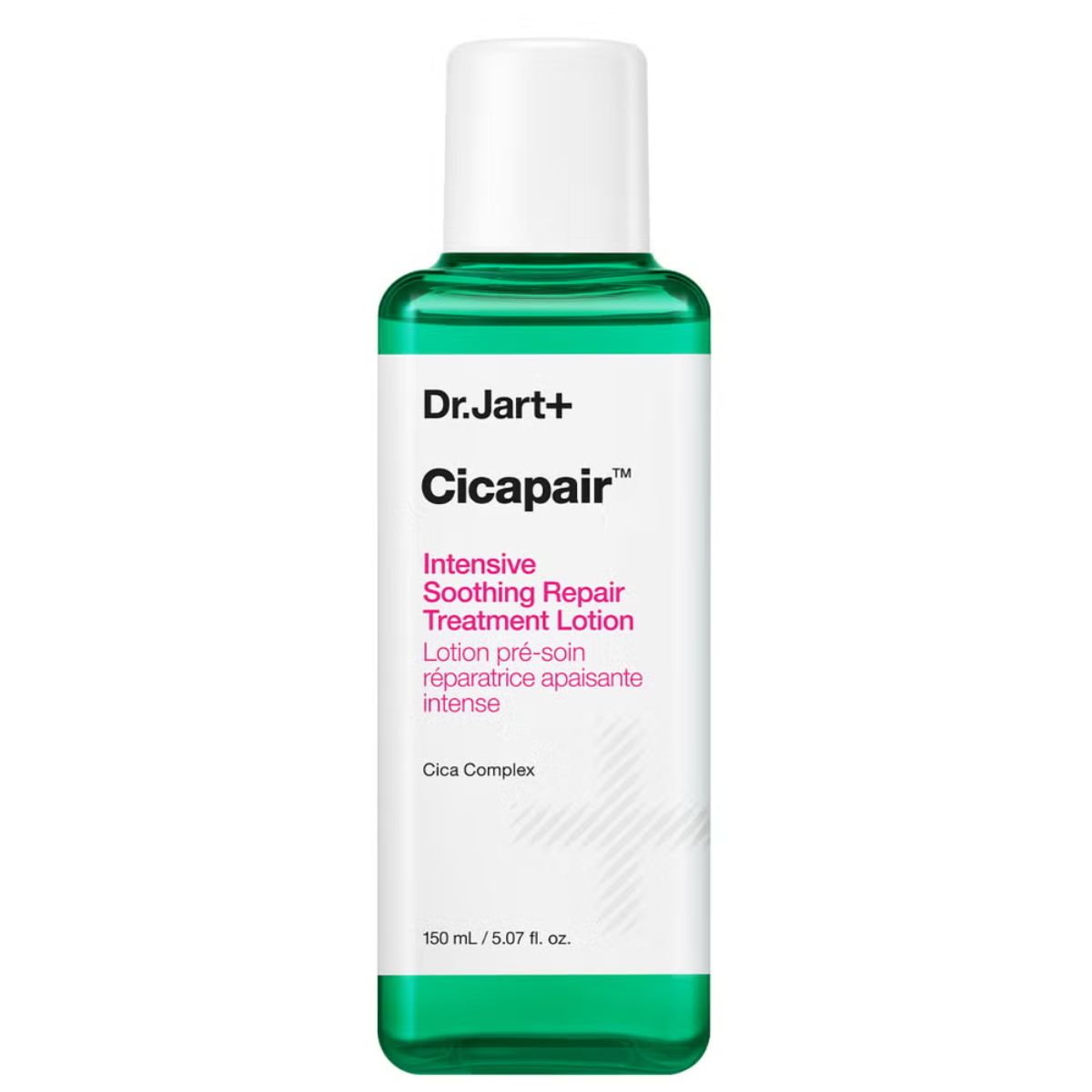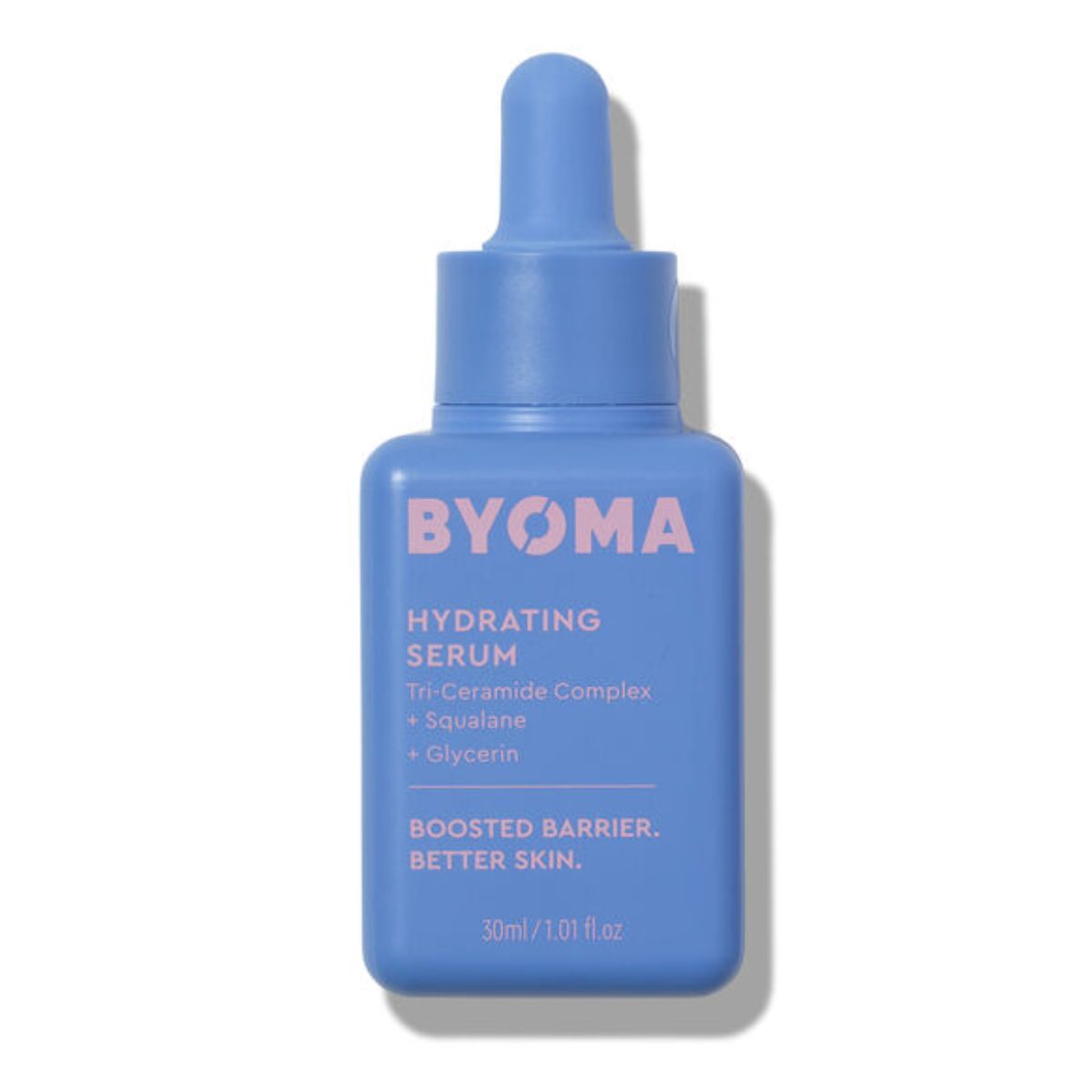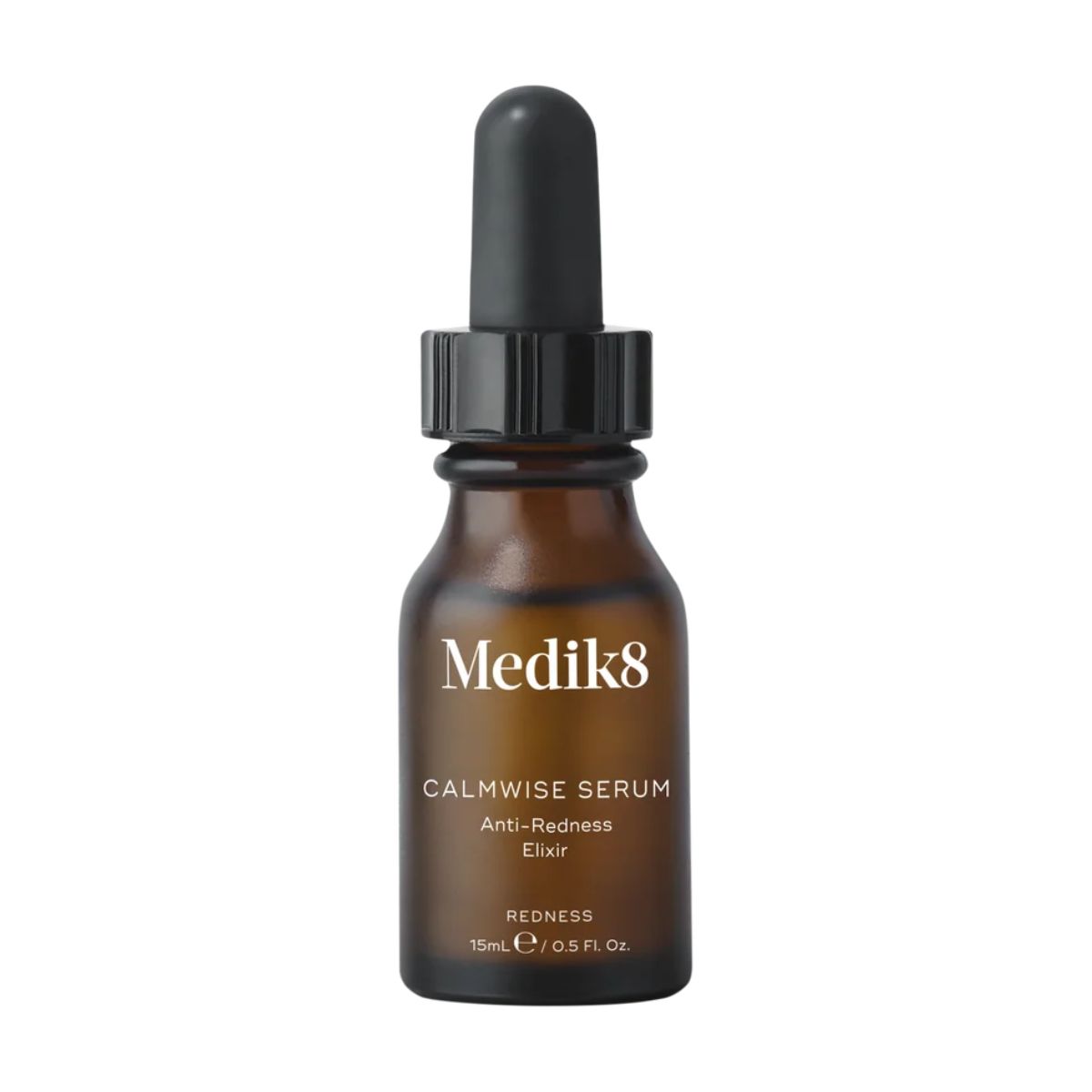What if we told you that there was a very simple step that would give you brighter skin and help your make-up sit better? Dermaplaning is the pain-free, in-clinic or at-home exfoliating treatment that removes the top layer of dead skin cells and peach fuzz from the surface of the skin.
“Imagine your skin without that layer of dullness and tiny hairs,” says Dr Kemi Fabusiwa, skin expert and doctor. “Your skincare products will penetrate better, meaning you get more bang for your buck, and your make-up will glide on more flawlessly.”
Here’s everything you need to know about dermaplaning…
What is dermaplaning?
“Dermaplaning is a minimally invasive exfoliating treatment that involves the use of a small blade to scrape dead skin cells and fine hairs off the surface of the skin,” says Consultant Dermatologist Derrick Phillips. It’s a treatment that’s offered by many skincare clinics either as a standalone or as part of a longer facial. There are also at-home dermplaning devices, which aren’t as sharp as the surgical scalpels used by the professionals.
What are the skincare benefits of dermaplaning?
Much like traditional forms of exfoliation, like peels and face scrubs, by removing the top layer of dead skin cells that dulls the skin, you encourage a more natural radiance. Dr Phillips says that it also helps your skincare products absorb better, which enhances their efficacy. “It can also diminish the appearance of fine lines, as well as promote cell turnover.”
What are the make-up benefits of dermplaning?
Apart from helping give you a glowy base, there are other benefits of dermaplaning, as Pro Make-up Artist, Sarah-Jane Froom explains. “Dermaplaning is one of my favourite ways to prep the skin before make-up. By gently removing the layer of peach fuzz and dead skin, you create a super-smooth canvas that makes foundation glide on effortlessly and gives that soft-focus, luminous finish. On dermaplaned skin, everything blends seamlessly and looks super even. Without it, foundation can sometimes cling to dry patches or fine hair, which makes the texture appear heavier. When your skin is prepped this way, your make-up doesn’t just look better, it lasts longer, feels lighter, and photographs like a dream.”
She recommends doing it four to five days before a big event to allow the skin to calm and settle.
Is it safe to do dermaplaning at home?
Dr Fabusiwa only has positive things to say about at-home treatments. “It’s super easy and convenient,” she says. “Just make sure you choose a high-quality dermaplaning razor with a sharp, sterile blade and a safety guard to protect your skin. Remember, using a clean, sharp blade is key to avoiding irritation or infection.”
Dr Phillips, on the other hand, says that he would always recommend going to see a professional over doing it yourself at home, because you are going to get a more effective treatment. “The procedure requires a sterile environment and specialised tools, so it’s best carried out in a clinical setting. Over-exfoliation can also compromise the skin barrier, increasing the risk of post-inflammatory hyperpigmentation, particularly in darker skin tones. At-home tools are much less effective, as they use blunter blades and don’t achieve the same level of exfoliation or precision as professional treatments. In-clinic dermaplaning ensures proper technique, hygiene, and aftercare, significantly reducing these risks.”
However, he knows that lots of people do do it, so his advice is to be cautious. Always start with clean, dry skin and use an at-home dermaplaning device, which is typically safer. He warns against using a professional scalpel, as it’s so easy to cut yourself. “If you have sensitive skin, rosacea, or acne,” he adds. “I would strongly recommend leaving dermaplaning to a professional to avoid irritation or infection.”
How to do dermaplaning at home:
- hold the skin taut
- use light, short strokes at a 45° angle
- avoid areas with active breakouts, eczema or irritation
- never use the blade more than once
- finish with a gentle, hydrating moisturiser
Dr Phillips says that dermaplaning can leave the skin feeling really dry and sensitive, so focusing on hydration afterwards is key. “Use soothing, barrier-supporting products containing ingredients like hyaluronic acid, ceramides, or niacinamide to help restore moisture. It’s best to avoid retinol, AHAs, and other exfoliating acids for several days, as they can cause irritation on freshly exfoliated skin. Always finish with a broad-spectrum SPF, as the skin is more vulnerable to sun damage following treatment.”
Does dermaplaning affect hair growth? Can it leave you with stubble or encourage growth?
This is a common misconception with dermaplaning. Whilst TikTok might be telling you that it encourages hair growth, that is, in fact, false. Dermaplaning does not make the hair grow back thicker, faster or darker, say both Dr Fabusiwa and Dr Phillips. “Dermaplaning only removes the vellus hair (peach fuzz) at the skin’s surface. It doesn’t affect the hair follicle itself, which is responsible for hair growth and determines hair colour and texture,” adds Dr Fabusiwa.

